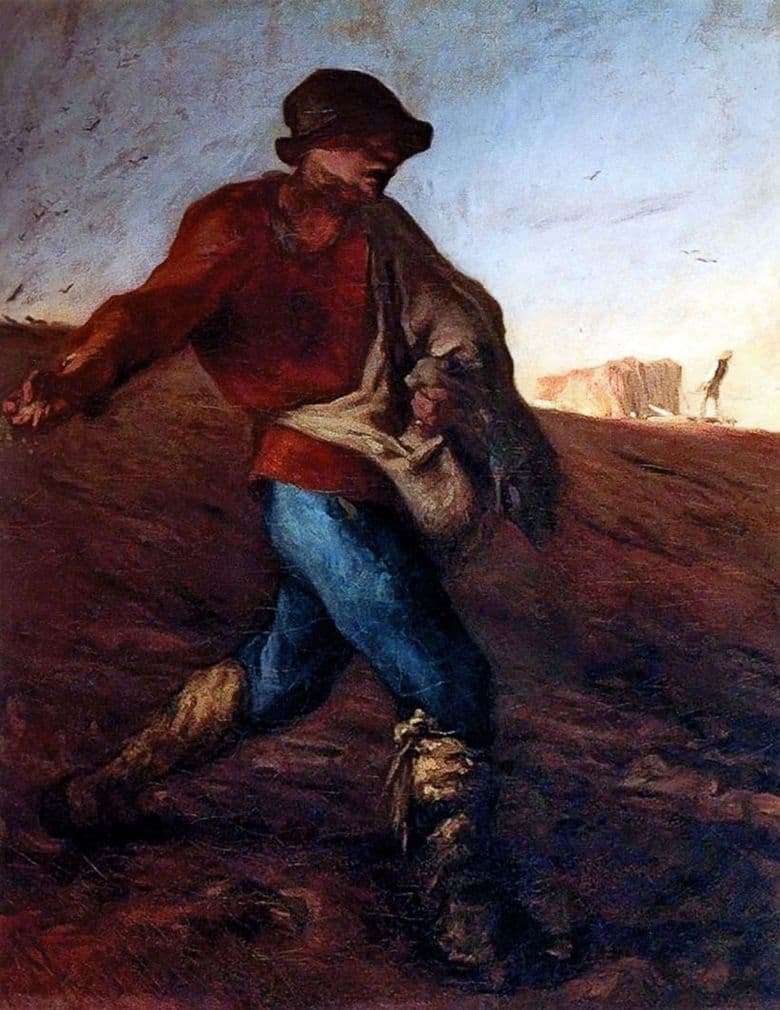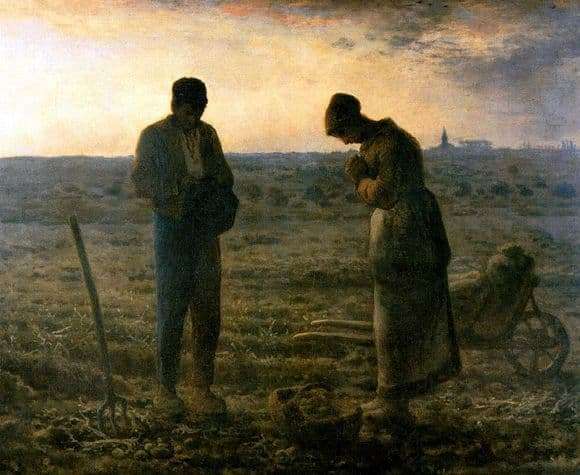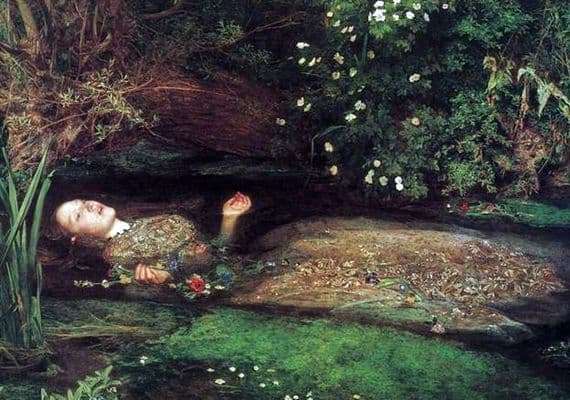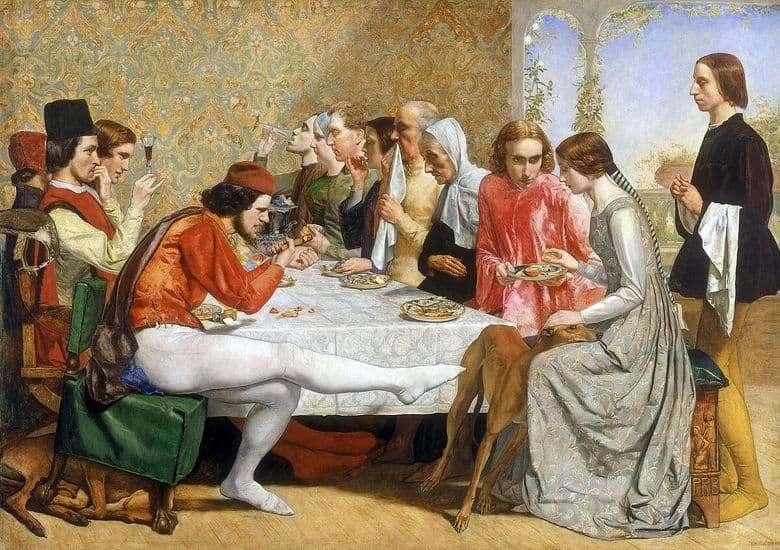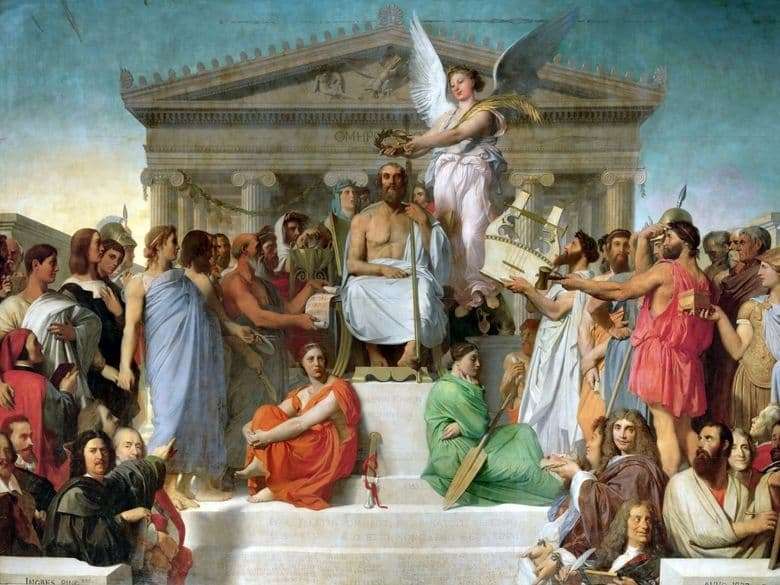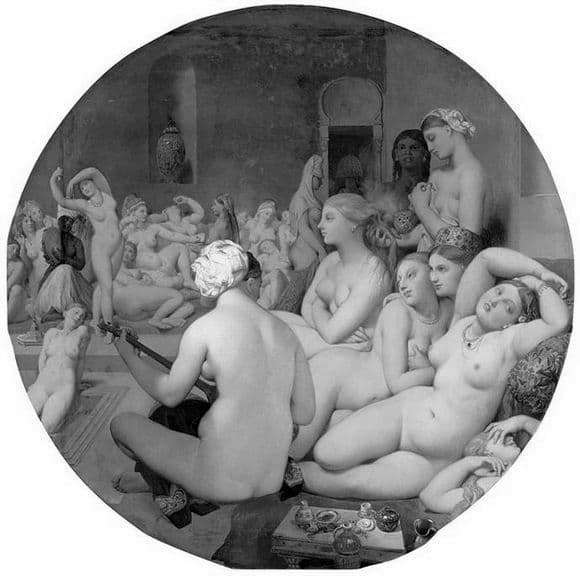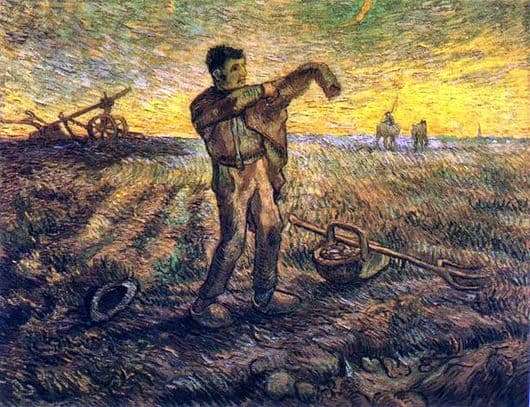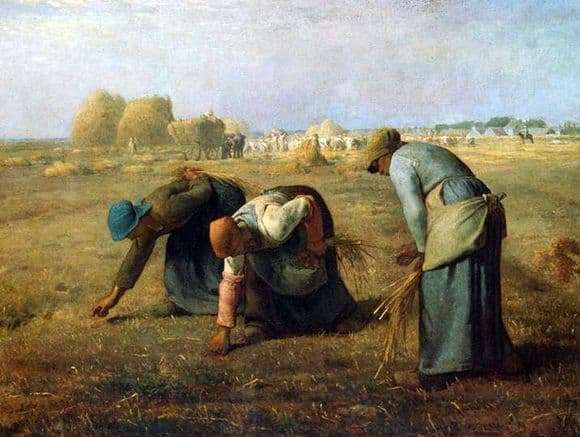
The painting “Collector of Ears” was painted in 1857 and is currently in the Paris museum of Orsay. Materials for the creation of the work served as oil and canvas. The dimensions of the canvas are 84 by 111 cm.
In the picture we see a group of women working in the field. Warm, dull colors of nature and muted blue colors of clothes, bright sky with soft clouds, simple composition, smooth, soft figures of women – all this conveys a calm mood, allows the viewer’s eye to rest. It seems that, peering into the picture, you even begin to feel the smell of freshly mown hay.
Millet does not show the faces of women, the details of their clothes, paying great attention to the background, setting, drawing nature. Three haystacks can be seen in the background, their shape resembles something like three figures of hunched women. Also in the background can be seen horsemen, apparently, women clean the pieces of hay left after them.
A simple scene from everyday work life presents an unusually harmonious and full of beauty. Jean-Francois Millet emphasizes the simplicity of women’s dresses, but, nevertheless, writes them clean and neat. To some extent, the picture poetized the work and life of ordinary peasants.
The bent figures of women approach the earth, telling us that it is the earth that feeds them and makes it possible to live. They kind of worship the earth, thanks to her for their bread given by her. If you look closely, you can see that the hands of the gatherers are not bright and tender, far from elegant, but rather rough, strained, perhaps even callous.
However, looking at the work as a whole, we do not see fatigue and pain from tension and exhausting work, do not see drops of sweat flowing from the forehead, do not focus on these rough hands, and feel only the beauty of work and its fruits, rural life.
Description of the painting by Jean-Francois Millet “Collector ears”
